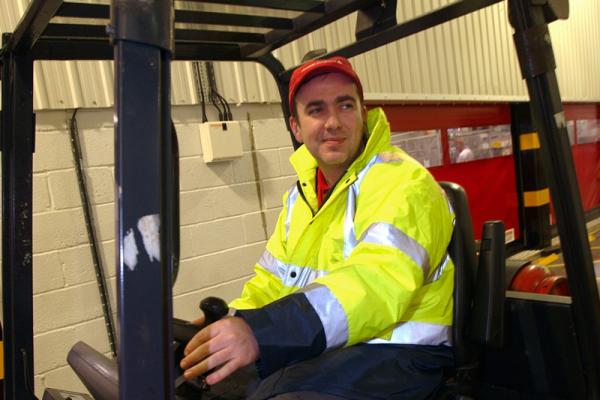GMB study shows erosion of manufacturing sector in London since 2006/7

52,000 fall in the number of workers in manufacturing sector in London since 2006/7 as erosion of the manufacturing base continues
Erosion cannot be allowed to continue as the UK has a balance of payments deficit of £95 billion which amounts to 5% of GDP which is not sustainable says GMB London
In the 10 years between 2006/7 and 2016/17 there was a fall of 52,000 in the numbers of workers employed in the manufacturing sector in London. The numbers fell from 214,400 to 162,400, a fall of 24.3%. This means that manufacturing workers make up 3.5% of the total workforce in the capital compared to 5.8% in 2006/7.
For the UK as a whole, the number of workers employed in manufacturing fell from 3,552,300 to 2,892,900, between 2006/07 and 2016/17, a fall of 18.6%. Manufacturing in the UK now makes up 9.1% compared to 12.2% in 2006/7.
Barnet had 14,300 employed in the manufacturing sector between in 2006/07. By 2016/17 the figure was just 3,100, a drop of 78.3%. This was the biggest drop in the capital, and showed that manufacturing workers made up just 1.6% of the total workforce in Barnet, compared to 8.8% in 2006/7.
Other areas that saw a fall were Sutton, where the drop was -68.4%, followed by Southwark -63.3%, Enfield -63.2%, Westminster -59.6%, Haringey -58.3%, Havering -55.4%, Bexley -50%, Harrow -44.4%, and Bromley -40.4%. The data for City of London Council was not available.
12 local councils in London bucked the trend, with numbers in manufacturing increasing. These were Wandsworth, Greenwich, Merton, Islington, Hackney, Lambeth, Tower Hamlets, Redbridge, Barking & Dagenham, Camden, Hillingdon, and Newham.
The figures for the 32 councils are set out in the table below. This is from a new study by GMB London Region of official data from the Office of National Statistics (ONS) for 32 councils in London. It compares the number of people employed in the manufacturing industry and as a percentage of all in employment, followed by the changes in numbers and in percentages. [See notes to editors for sources, definitions and qualifications]
|
annual population survey |
||||||
|
ONS Crown Copyright Reserved [from Nomis on 29 January 2018] |
||||||
|
confidence |
95% confidence interval of percent figure (+/-) |
|||||
|
variable |
% all in employment who work in - C:manufacturing (SIC 2007) |
|||||
|
Area |
Oct 2006-Sep 2007 |
Oct 2016-Sep 2017 |
||||
|
numerator |
percent |
numerator |
percent |
change |
% change |
|
|
England |
3,018,100 |
12.3 |
2,464,300 |
9.2 |
-553,800 |
-18.3 |
|
Great Britain |
3,452,100 |
12.1 |
2,812,600 |
9.1 |
-639,500 |
-18.5 |
|
United Kingdom |
3,552,300 |
12.2 |
2,892,900 |
9.1 |
-659,400 |
-18.6 |
|
London |
214,400 |
5.8 |
162,400 |
3.5 |
-52,000 |
-24.3 |
|
Wandsworth |
6,100 |
3.6 |
12,900 |
6.9 |
6,800 |
111.5 |
|
Greenwich |
3,100 |
2.9 |
5,300 |
3.8 |
2,200 |
71.0 |
|
Merton |
2,700 |
2.6 |
4,600 |
4.0 |
1,900 |
70.4 |
|
Islington |
3,600 |
4.0 |
5,200 |
3.8 |
1,600 |
44.4 |
|
Hackney |
2,000 |
2.0 |
2,700 |
1.7 |
700 |
35.0 |
|
Lambeth |
5,900 |
4.2 |
7,800 |
3.8 |
1,900 |
32.2 |
|
Tower Hamlets |
2,900 |
3.3 |
3,600 |
2.5 |
700 |
24.1 |
|
Redbridge |
4,600 |
3.9 |
5,700 |
3.9 |
1,100 |
23.9 |
|
Barking and Dagenham |
4,400 |
6.4 |
5,400 |
6.1 |
1,000 |
22.7 |
|
Camden |
2,300 |
2.3 |
2,700 |
2.0 |
400 |
17.4 |
|
Hillingdon |
11,200 |
9.8 |
12,400 |
8.2 |
1,200 |
10.7 |
|
Newham |
4,700 |
4.6 |
5,000 |
3.1 |
300 |
6.4 |
|
Kingston upon Thames |
4,300 |
5.3 |
3,800 |
4.1 |
-500 |
-11.6 |
|
Croydon |
7,300 |
4.4 |
6,300 |
3.1 |
-1,000 |
-13.7 |
|
Lewisham |
5,800 |
4.6 |
4,500 |
2.6 |
-1,300 |
-22.4 |
|
Hammersmith and Fulham |
4,000 |
4.4 |
3,100 |
3.0 |
-900 |
-22.5 |
|
Waltham Forest |
8,000 |
7.4 |
5,900 |
4.0 |
-2,100 |
-26.3 |
|
Ealing |
15,100 |
9.9 |
10,600 |
5.8 |
-4,500 |
-29.8 |
|
Kensington and Chelsea |
3,000 |
3.7 |
2,100 |
2.7 |
-900 |
-30.0 |
|
Brent |
12,300 |
9.5 |
8,600 |
5.5 |
-3,700 |
-30.1 |
|
Hounslow |
6,400 |
5.7 |
4,400 |
3.1 |
-2,000 |
-31.3 |
|
Richmond upon Thames |
8,200 |
8.4 |
5,000 |
4.8 |
-3,200 |
-39.0 |
|
Bromley |
8,900 |
5.9 |
5,300 |
3.3 |
-3,600 |
-40.4 |
|
Harrow |
8,100 |
7.3 |
4,500 |
3.5 |
-3,600 |
-44.4 |
|
Bexley |
6,600 |
6.1 |
3,300 |
2.7 |
-3,300 |
-50.0 |
|
Havering |
10,100 |
9.0 |
4,500 |
3.5 |
-5,600 |
-55.4 |
|
Haringey |
4,800 |
4.3 |
2,000 |
1.5 |
-2,800 |
-58.3 |
|
Westminster |
4,700 |
4.5 |
1,900 |
1.5 |
-2,800 |
-59.6 |
|
Enfield |
12,500 |
9.3 |
4,600 |
3.0 |
-7,900 |
-63.2 |
|
Southwark |
7,900 |
6.2 |
2,900 |
1.6 |
-5,000 |
-63.3 |
|
Sutton |
7,900 |
8.2 |
2,500 |
2.2 |
-5,400 |
-68.4 |
|
Barnet |
14,300 |
8.8 |
3,100 |
1.6 |
-11,200 |
-78.3 |
|
City of London |
! |
! |
! |
! |
! |
! |
|
# These figures are suppressed as statistically unreliable. |
||||||
|
! Estimate and confidence interval not available since the group sample size is zero or disclosive (0-2). |
||||||
|
* Estimate and confidence interval unreliable since the group sample size is small (3-9). |
||||||
Warren Kenny, GMB Regional Secretary, said:
"This steady erosion of the manufacturing base is continuing with job losses at Britvic and Coleman's in Norwich as the latest examples.
“However, the erosion cannot be allowed to continue. The UK has a balance of payments deficit of no less than £95 billion which amounts to 5% of our gross domestic product. This is not sustainable and will not be sustained.
“Last year the government published plans for a coherent industrial strategy which must be built on to halt the erosion of manufacturing jobs.
“This requires cooperation between local authorities and national government, the education sector and both employers and unions to bring forward plans for new manufacturing jobs in every area of the region.
“It requires that public procurement is used to promote export sectors and to favour import substitution. On green energy sources for example there should be a threshold for UK sourced parts before a project is eligible for subsidies.
“It is fashionable not to worry about the balance of payments deficit but this is wrong. We need politicians who will provide leadership to address the issue before it is too late. The time is now."
ENDS
Contact: Shaun Graham 07885 706 556 or 020 8573 6969 or Ivan Mercer 07713 077 194 or 01603 626 492 or GMB Press Office 07970 114 762
Notes to Editors
1.Source: Annual Population Survey from the Office for National Statistics; Nomis
2.Annual Population Survey is residence based and a continuous household survey covering the UK.
3. The data is for all in employment who work in the manufacturing industry for the years to September 2007 and September 2017
4. The APS is the source recommended for employment-related statistics, such as estimates of the number of people in employment or unemployed.


